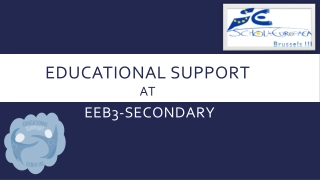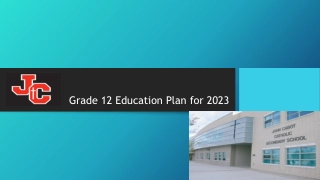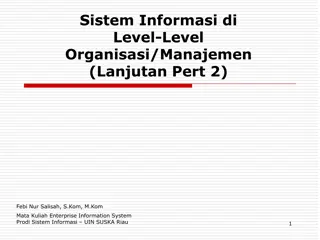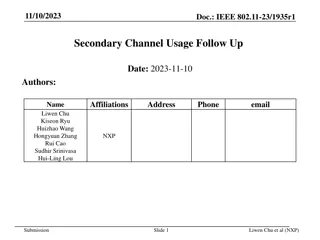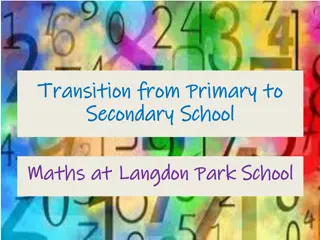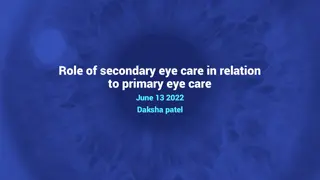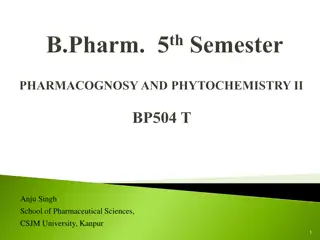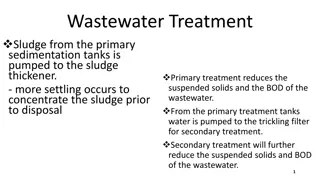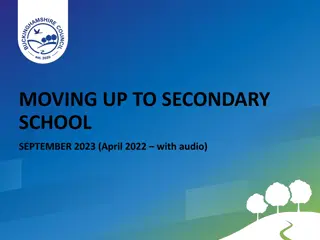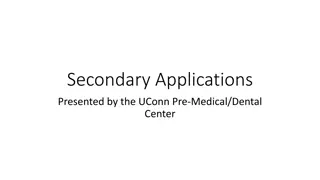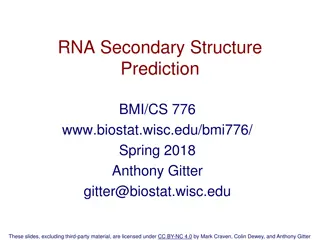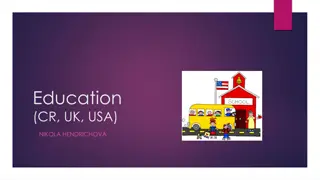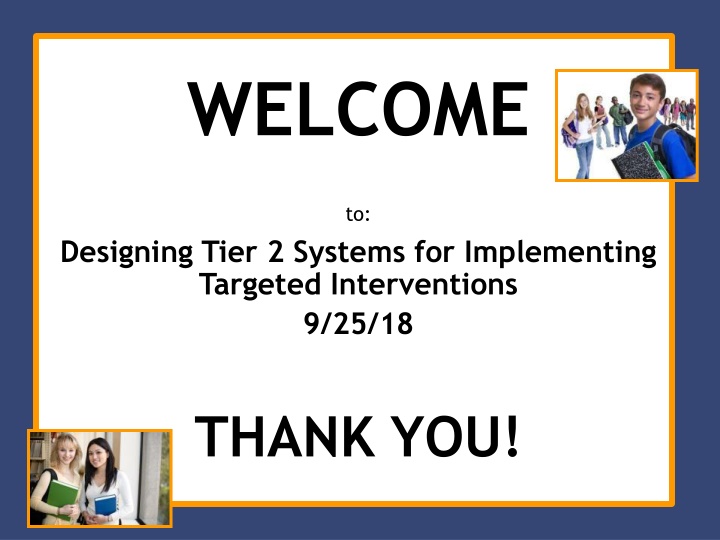
Implementing Tier 2 Systems for Targeted Interventions
Learn about designing effective Tier 2 systems for implementing targeted interventions in schools. Explore key elements, meeting roles, and the multi-tiered system of support. Discover strategies for behavioral tiers and the importance of system development for successful implementation of interventions.
Download Presentation

Please find below an Image/Link to download the presentation.
The content on the website is provided AS IS for your information and personal use only. It may not be sold, licensed, or shared on other websites without obtaining consent from the author. If you encounter any issues during the download, it is possible that the publisher has removed the file from their server.
You are allowed to download the files provided on this website for personal or commercial use, subject to the condition that they are used lawfully. All files are the property of their respective owners.
The content on the website is provided AS IS for your information and personal use only. It may not be sold, licensed, or shared on other websites without obtaining consent from the author.
E N D
Presentation Transcript
WELCOME to: Designing Tier 2 Systems for Implementing Targeted Interventions 9/25/18 THANK YOU!
Agenda 1. Multi-Tiered System Of Support 2. Tier 2: Elements of Effective Systems Conversations 3. Gallaher Elementary (Christina) 4. Tier 2: Elements of Effective Problem- Solving Conversations 5. Exploring Interventions Check-in, Check-out (CICO) Asset Mapping 6. Action Planning
Meeting Roles Required for Today: Recorder/Note taker Completes Forms; takes notes; keeps track of decisions made Reporter - Uses recorder s notes to share with the group Optional: Facilitator - Guides the case study activity; remains objective Timekeeper - Keeps track of time spent on issue; prompts group when allotted time is up
School-Wide Systems for Student Success: A Multi-Tiered System of Support Academic Systems Behavioral Systems Tier 3/Tertiary Interventions Individual students Assessment-based High intensity 1-5% 1-5% Tier 3/Tertiary Interventions Individual students Assessment-based Intense, durable procedures 5-15% Tier 2/Secondary Interventions Some students (at-risk) High efficiency Rapid response Small group interventions Some individualizing Tier 2/Secondary Interventions 5-15% Some students (at-risk) High efficiency Rapid response Small group interventions Some individualizing Tier 1/Universal Interventions 80-90% All students Preventive, proactive 80-90% Tier 1/Universal Interventions All settings, all students Preventive, proactive Illinois PBIS Network, Revised May 15, 2008. Adapted from What is school-wide PBS? OSEP Technical Assistance Center on Positive Behavioral Interventions and Supports. Accessed at http://pbis.org/schoolwide.htm
Reflecting on your school behavioral tiers Intervention Names Coordinators Intent/Outcome Goal Tier 3 Tier 2 Tier 3
System Development is Key! Dean Fixsen, Karen Blase, Robert Horner, George Sugai, (2008) To scale up interventions we must first scale up implementation capacity Building implementation capacity is essential to maximizing the use of Positive Behavior Support and other innovations Adapted from the Illinois PBIS Network
When a school implements an intervention without careful consideration of the systems features necessary to guide implementation, the intervention is likely to disappear quickly, be implemented with poor fidelity, or becomes part of a hodgepodge of interventions, none of which have documented effects. Anderson & Borgmeier 2010
3-Tiered System of Support Necessary Conversations (Teams) Tier 3 Team School-wide Team Tier 2 Team Uses process data; determines overall intervention effectiveness Identifies targeted student needs; Selects and supports implementation of relevant interventions; Evaluates interventions use Plans SW & Class- wide supports Brief FBA/BIP Universal Support through SW Program FBA/BSP PTR Person Centered Planning
Tier 1 & 2 Comparisons Similarities Systematic problem solving process is foundation Differences Tier 1 focuses on schoolwide interventions Supports put in place are based on the function of student behaviors Tier 2 interventions are oriented to address the specific demonstrated needs of a particular sub-group of students. Data are used for determining & monitoring interventions Data used for monitoring students at both tiers are often existing data sources, such as ODRs,
Tier 2 & 3 Comparisons Similarities Differences Tier 2 focuses on group-based interventions rather than highly individualized supports Systematic problem solving process is foundation Supports put in place are based on the function of the student behavior Tier 2 interventions can be determined without pulling together a team formed specifically for the student Data are used for determining & monitoring interventions Data used for monitoring students at Tier 2 are often existing data sources, such as ODRs, rather than observation data taken on specifically defined behaviors
Tier 3 is also a Continuum of Supports Wrap-Around or Person-Centered Planning Based Supports Long-standing, extremely intense behaviors, mental health concerns, complex life events Multiple services, agencies or institutions Team Based PTR More intensive FBA/BIP process Multiple meetings (2-4) or one long meeting (>2 hours) Best for chronic, durable, intense behaviors Brief PTR (consultant based) FBA/BIP developed in one meeting (~60 minutes) Best for high frequency/low intensity behaviors Noncompliance, minor disruptions Typically uses existing data sources to develop FBA Wraparound or Person Centered Planning Team Based PTR Brief PTR Functional thinking at all levels
REMEMBER: Tiers 2 gives students a higher dosage of what we already do at Tier 1 Teach Skills Prompt use Reinforce the use of skills Monitor effectiveness Communicate
3-Tiered System of Support Necessary Conversations (Teams) School-wide Team Tier 2 Team Tier 3 Team Identifies targeted student needs, Selects and supports implementation of relevant interventions, and Evaluates interventions use Uses Process data; determines overall intervention effectiveness Plans SW & Class-wide supports System Conversations Uses process data; evaluates overall effectiveness; does NOT involve discussion of individual students Problem Solving Conversations Matches students to interventions and monitors progress, making adjustments as needed Person Centered Planning Universal Support through SW Program FBA/BSP PTR CICO Group interventions Group w. individual features Brief FBA/BSP Adapted from the Illinois PBIS Network
3-Tiered System of Support Necessary Conversations (Teams) Tier 2 Team Identifies targeted student needs, Selects and supports implementation of relevant interventions, and Evaluates interventions use System Conversations Uses process data; evaluates overall effectiveness; does NOT involve discussion of individual students Problem Solving Conversations Matches students to interventions and monitors progress, making adjustments as needed
3-Tiered System of Support Necessary Conversations (Teams) Tier 2 Team Identifies targeted student needs, Selects and supports implementation of relevant interventions, and Evaluates interventions use System Conversations Uses process data; evaluates overall effectiveness; does NOT involve discussion of individual students Problem Solving Conversations Matches students to interventions and monitors progress, making adjustments as needed
Tier 2 System Conversation Percentage Activity Create your Expected Triangle Part 2 of Reflection Packet 1) What is your total building population? 2) What would 15% of your building population be? What would 5% be? Consider these 2 numbers as range of students who should be receiving Tier 2 interventions. 3) What would 5% of your building population be? What would 1% be? Consider these 2 numbers as range of students who should be receiving Tier 3 interventions.
Tier 2 System Conversation Percentage Activity Review & Compare with Actual Triangle 1) Looking at your DDRT, is your SW program is working as intended? (80% are responding) Do you have tier 1 needs? If yes, how will you follow up with tier 1 team? 2) Complete chart for expected and actual triangle. 3) Look back at Part 1, and discuss willingness and readiness to examine tier 1 and tier 2
IF... FOCUS ON... School Wide System More than 40% of students receive one or more office referrals More than 2.5 office referrals per student More than 35% of office referrals come from non- classroom settings More than 15% of students referred from non- classroom settings More than 60% of office referrals come from the classroom 50% or more of office referrals come from less than 10% of classrooms More than 10-15 students receive 5 or more office referrals Non-Classroom System Classroom Systems Targeted Group Interventions / Classroom Systems Less than 10 students with 10 or more office referrals Less than 10 students continue rate of referrals after receiving targeted group settings Small number of students destabilizing overall functioning of school Individual Student Systems
Looking at your SW data in detail Drilling down can reveal opportunities for SW and/or CR interventions Your team reviews the September data and notice that there are a couple of students with 5+ referrals for being late to class. You begin using daily report cards with them. Which Tier? Your Tier 2 team reviews the October student data. From this data, over 50 students have been referred to the team for 5+ referrals for being late to class. What would you do?
Looking at your SW data in detail Drilling down can reveal opportunities for SW and/or CR interventions Your Tier 2 team reviews the referrals for November. There are 26 students with 4+ referrals for fighting in the hallway, hallway disruption, late to class, and offensive touching (location: hallway). What would you do?
Positive Behavior Support as Your MTSS ODRs, Credits, Attendance, Grades, etc. Tier 1/Universal School-Wide Assessment School-Wide Prevention Systems Classroom Management Tier 2/ Secondary Check-in/ Check-out (CICO) Daily Progress Report (DPR) Interviews, Questionnaires, Behavior Rating Scale, etc. Continuum of Groups Tier 3/ Tertiary Brief Functional Behavior Assessment/Behavior Intervention Planning (FBA/BIP) Observations and ABC Analysis Complex FBA/BIP
3-Tiered System of Support Necessary Conversations (Teams) Tier 2 Team Identifies targeted student needs, Selects and supports implementation of relevant interventions, and Evaluates interventions use System Conversations Uses process data; evaluates overall effectiveness; does NOT involve discussion of individual students Problem Solving Conversations Matches students to interventions and monitors progress, making adjustments as needed
Tier 2 System Conversations Uses process data; evaluates overall effectiveness; does NOT involve discussion of individual students Problem Solving Conversations Matches students to interventions and monitors progress, making adjustments as needed Check-In / Check Out (CICO)
3-Tiered System of Support Necessary Conversations (Teams) Tier 2 Team Identifies targeted student needs, Selects and supports implementation of relevant interventions, and Evaluates interventions use System Conversations Uses process data; evaluates overall effectiveness; does NOT involve discussion of individual students Problem Solving Conversations Matches students to interventions and monitors progress, making adjustments as needed
Outcomes Examining & addressing gaps in available Tier 2 interventions Identifying interventions for implementation and that need refinement * Determining percent of students successful in group interventions* Identifying students for problem solving conversations* * Data will guide yours systems team in these activities.
The Logistics and Set - Up Team Operating Procedures (Logistics) Monthly meeting schedule Agenda, minutes, and use of meeting roles System Set up Activities Develop process for identifying students for Tier 2 support Request for assistance Forms & data rules Staffing Identification of coordinators & facilitators of existing interventions Identification of coordinators & facilitators of new interventions Communication: with staff, student, families
Additional Tier 2 System Conversations Your Interventions Relationship- and Skill-Building Measurement and Evaluation: Of the Intervention s Use and Fidelity Coming Soon
Determine Team Operating Procedures Monthly meeting schedule Agenda & minutes Use of meeting roles Current Action Plan
Sample Mtg. Agenda 1. Review summary data for current tier 2 intervention: (record on Tracking Tool for each intervention) Provide %age of students responding, not responding, graduating Determine if changes are needed* Decide how to share this summary info with staff 2. Determine how to roll-out a new intervention 3. Discuss possible new interventions for behaviors of concern
Develop Processes for: Identifying students for Tier 2 support Forms & data rules Request for assistance
Develop Data Rules for Identifying Students for Tier 2 Interventions (IN) Student outcome data from School-wide: Office Discipline Referrals Suspensions Attendance Tardies Nursing/Wellness Visits Additional Sources: Universal Screeners (SSBD, BESS etc.) Requests for Assistance made by teachers, family members and/or students Multiple data sources Decision rules in place
Create or Improve Request for Tier 2 Assistance Request Form Data Should be brief One form whether concern is academic, behavioral or both Should contain name of person requesting assistance and the dates/times they are available to meet, if needed You may have one already for teachers but do you have one for families and students?
Pull Together Effective Tier 2 Team (PST/IST/? Team) Knowledge about operation of school across grade levels and programs Required: Administration School Psychologist Staff with RTI experience Tier 1 School-wide Team Representative Intervention Coordinators of each intervention Consider: Counselors, Social Workers, Family Crisis Therapists, Community representatives Knowledge of students Applied behavioral expertise Administrative authority
Team leader vs. Coordinator vs. Facilitator Tier 2 Team Leader Schedules monthly meetings Collect & review data to share during team meetings Provide general staff updates Intervention Coordinators Organizes and/or oversees the specific interventions such as CICO or group interventions with & without individual features Communicates with intervention facilitators May also be a facilitator of group interventions Facilitators-Trained Staff Directly provides intervention support services to youth/families Roles include: meeting with students for CICO, running groups, not necessarily members of systems team Report student progress
The Tiered Fidelity Inventory Your Tier 2 Planning Tool TEAM 2.1 Team Composition 2.2 Team Operating Procedures 2.3 Screening 2.4 Request for Assistance 2.5 Options for Tier II EVALUATION 2.10 Level of Use 2.11 Student Performance Data 2.12 Fidelity Data 2.13 Annual Evaluation INTERVENTIONS 2.6 Tier II Critical Features 2.7 Practice Matched to Student Need 2.8 Access to Tier 1 Supports 2.9 Professional Development
Activity - Reflection on Your Interventions Complete these TFI Items: 2.1 2.2 2.3 2.4
Set-Up Your Communication Methods Support communication with staff, students, and families Inform all about how students are eligible for the intervention Share types of interventions available Share the process to request assistance for a student Plan to share updates on overall intervention success
Communication Methods Example ideas: Email Newsletters Website Parent Meetings Open House/Back-to-School
Develop You Professional Development Written process for: Teaching staff how to refer students to Tier 2 services Implement each Tier 2 intervention in place
Your Interventions Tier II supports are explicitly linked to Tier I supports. Students receiving Tier II supports have access to Tier I supports. School-wide Team Tier 2 Team Tier 3 Team
Your Interventions Multiple ongoing, evidence-based behavior support interventions are available for skill-building and relationship-building. Interventions provide: additional instruction/time for student skill development, additional structure/predictability, and/or increased opportunity for feedback (e.g., daily progress report). .
Best Practices for Interventions Interventions are efficient Continuously available so students can receive support quickly (within 2-3 days optimally) Minimal time commitment required from classroom teachers Required skill sets needed by teachers easily learned Aligned with school-wide expectations Emphasis on intervention designed to support multiple students simultaneously (e.g. Check-In/Check-Out, Social Skills Groups, etc.) Consistently implemented with most students, some flexibility Intervention selected matched to function of student behavior Adapted from Rose Iovannone, Brief PTR
Tier 2 System Conversation Your Interventions - Selection A formal process is in place to select Tier II interventions that: Match student need (e.g., behavioral function) and Adapt to improve contextual fit (e.g., culture, developmental level).
Research shows function matters Study of CICO based on function: Results indicated that, for students with attention- maintained behavior, implementation of Check- In/Check-Out was associated with statistically and clinically significant improvements in ratings of problem behavior, ratings of prosocial behavior, and office discipline referrals. However, for students with escape-maintained behavior, no statistically significant effects were found. There exists the need for multiple tier two interventions in both academic and behavior support. McIntosh et al., 2009
How is academic success being addressed? Relationship-Building Interventions Relationship-Building Interventions For students whose behavior is a function of seeking adult attention For students who can do appropriate behavior but typically don t do Goal: Provide greater reinforcement for desired behaviors than is currently provided for undesired behavior If the student does not experience the interactions as positive and supportive, the intervention will not work!
Relationship-Building Interventions How is academic success being addressed? What mentoring opportunities are available to your students? Big Brothers/Big Sisters? Other community-based mentor programs? School-based mentor programs? As part of before/after school programming? Key features of successful mentoring programs: Ongoing mentor training with structured activities Clear expectations regarding contact frequency Involvement of parents by communicating student goals (DuBois et al, 2002; cited in Hawken et al.)
Relationship-Building Interventions How is academic success being addressed? How will you monitor the effectiveness of existing mentoring programs? Track fidelity Frequency of mentoring Frequency of parent contact Student and/or parent satisfaction with match Track outcomes using existing data as much as possible Reduction in ODR s Improvements in attendance, tardies, skips Improvements in Daily Report Card of school expectations (ON/OUT CONSIDERATIONS)
Relationship-Building Interventions How is academic success being addressed? How will you monitor the effectiveness of existing mentoring programs? Summarize these individual data for use in tracking the success of the system If the student does not experience the interactions as positive and supportive, the intervention will not work!

